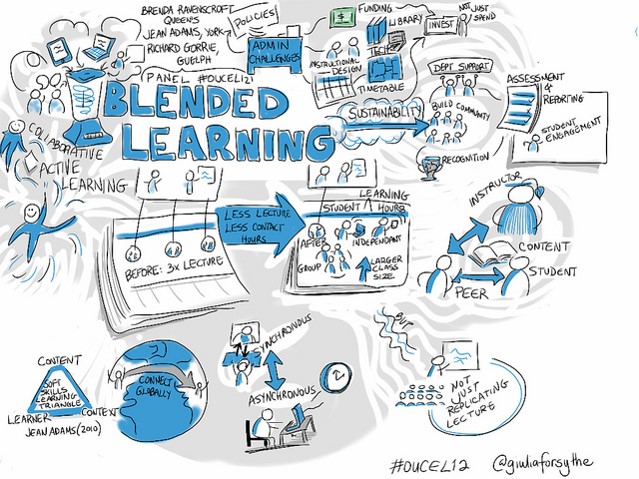
Blended learning is increasing in popularity as an effective way to meet diverse learner requirements and offer increased flexibility for students through the thoughtful integration of resources and activities in an online environment with face-to-face teaching. Alammary et al. (2014, p.440) in their paper on blended learning in higher education found that “[t]he question now is not whether to blend to not; it is how to design an effective blend.” To help staff in designing an effective blended approach; LEaD have developed an online resource to support staff in planning,designing, teaching and evaluating blended learning programmes, modules and activities. We are using a blended learning design framework to help staff identify the approach that is most appropriate for their requirements, their level of experience and time available. It identifies the challenges with each approach and provides ideas on how to mitigate these challenges in order to develop an effective blended learning activity or module.
Blended Learning Framework
Alammary et al. (2014) present three distinct design approaches for developing blended learning modules.
- Low-impact approach: adding online activities to an existing course.
- Medium-impact approach: designing an online activity to replace an existing activity.
- High-impact approach: developing a blended module from the outset or redesigning a face-to-face or web-enhanced module as a blended learning module.
We selected this framework to support staff in developing blended learning as it has an emphasis on time and staff experience and knowledge. Recent UCISA (University and College Information Systems Association) surveys into Technology Enhanced Learning in UK Higher Education Institutions (HEIs) have highlighted that the biggest barrier to staff engagement with educational technology is time.
“Lack of time remains the leading barrier to TEL development, consolidating its position at the top of the list which it has held dating back to the 2005 Survey.” (Walker et al. 2014, p.2.)
In addition “lack of academic staff knowledge…” (ibid.) is the second highest barrier to staff engagement with educational technology according to the 2014 survey.
About the resource
The resource introduces the idea of blended learning and the framework as a means of staff working towards a blended learning approach that meets their requirements.
- The Identifying your Challenge section helps you to identify blended approaches to meet some common pedagogical challenges. This section is organised into suggestions for low-, medium- and high- impact approaches so that you can choose a solution that matches your experience and time available.
- The Planning section provides you with an overview and links to specific resources to help you in implementing a blended learning approach.
- The Designing and Developing section provides you with guidance on how to engage students in blended learning modules through the design of your online environment and activities.
- The Teaching Online section provides you with guidance on how to support students in blended learning environments.
- The Evaluation section provides some suggestions on how to evaluate the effectiveness of your blended learning approach and how to use technology to deliver different forms of evaluation.
Where can I access the resource?
The resource is available from our guidance website and is designed as a stand-alone resource. We also use this resource to support blended learning projects and a blended learning workshop with programme teams.
References
- Alammary, A., Sheard, J. & Carbone, A. (2014) ‘Blended Learning in higher education: Three different design approaches.’ Australian Journal of Educational Technology, 2014, 30(4), pp:440-454
- Walker, R. Voce, J., Nicholls, J., Swift, E., Ahmed, J., Horrigan, S., & Vincent, P. (2014) 2014 Survey of Technology Enhanced Learning for higher education UCISA Report [online] Available from: http://www.ucisa.ac.uk/~/media/groups/dsdg/Tel%202014%20Final%2018%20August.ashx (Accessed: 13.7.15)

